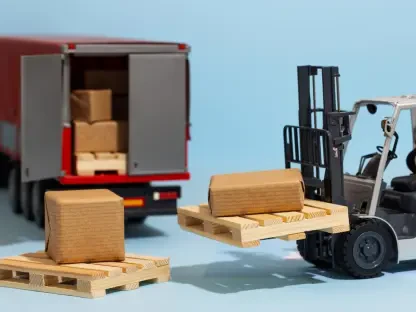In the dynamic business landscape of 2025, burgeoning enterprises frequently confront the pressing need for additional warehousing space. As inventory levels rise and customer demand escalates, businesses are compelled to explore various storage solutions, expand pre-existing facilities, or optimize current warehousing strategies to maximize space efficiency. One strategic approach that many consider is the renovation of older warehouses. Warehouses that boast a robust structural foundation offer viable investment opportunities, particularly when revitalized and repurposed with modern efficiencies. Besides the potential enhancements in operational efficiency, the initial financial outlay for refurbished commercial properties can be substantially lower than new constructions, often leading to more favorable returns on investment.
Dock equipment—integral to contemporary warehousing logistics—plays a pivotal role in bridging level discrepancies between loading docks and delivery vehicles. They ensure streamlined and secure loading and unloading processes by providing a stable platform essential for material handling. As such, addressing deteriorating dock equipment becomes indispensable when refurbishing an old warehouse. The repairs or replacements of dock levelers, shelters, and doors should aim at ensuring safe, efficient operations. A noteworthy case involved a client of BID Group, who inherited an outdated warehouse needing substantial upgrades to its loading bay equipment. With a focus on efficiency and cost-effectiveness, BID Group undertook a site evaluation, assessing whether repairs or replacements would deliver the best outcomes for their client’s needs. The following is a step-by-step approach to determine the most effective strategy for renovating warehouse equipment.
1. Evaluate Existing Conditions
A methodical examination of the current dock equipment, including levelers, shelters, and doors, is crucial to identify damages, wear, or safety risks. This comprehensive assessment forms the cornerstone of any refurbishment strategy, providing critical insights into the condition and operational readiness of the infrastructure. Identifying specific areas of deterioration or potential hazards not only guides the decision-making process but also ensures that any interventions enhance the facility’s efficiency. Knowing the exact state of each component lays a strong foundation for subsequent steps and helps avoid unforeseen complications.
2. Decide Between Fixing or Switching
Based on the detailed evaluation, companies must choose between undertaking necessary repairs or opting for full-scale replacements. This decision hinges on several factors, including financial feasibility, the extent of existing damage, and the potential lifespan of each component post-repair or replacement. While fixing may offer a short-term solution for minor issues, persistent or severe problems may warrant investing in newer, more reliable systems. The financial implications of each option should be carefully weighed against the potential benefits. Ultimately, the choice should align with long-term operational goals and safety benchmarks.
3. Ensure Adherence to Regulations
Any decision to repair or replace should strictly comply with prevailing safety standards and industry norms. Whether introducing new equipment or upgrading existing ones, ensuring compliance helps mitigate risks and enhances operational safety. Compliance with these standards not only fosters a safer working environment but also enhances credibility. It assures stakeholders of the company’s commitment to best practices. Moreover, adherence to regulations often safeguards businesses from potential legal liabilities.
4. Focus on System Compatibility
Renovating older warehouses is a strategy many consider. Those with solid structural foundations present attractive investment opportunities, especially when modernized with contemporary efficiencies. Alongside operational benefits, the initial cost for refurbishing older commercial properties tends to be significantly less than building new ones, potentially offering better returns on investment.
Dock equipment is crucial in modern warehousing, addressing level differences between docks and vehicles, ensuring safe and efficient loading/unloading through stable platforms. Updating dock equipment is essential when renovating outdated warehouses. Repairs or replacements of dock levelers, shelters, and doors are necessary for safe operations. BID Group had a client with an old warehouse needing dock equipment upgrades, analyzing repairs versus replacements for the best results. This involves a step-by-step process to identify effective renovation strategies.









